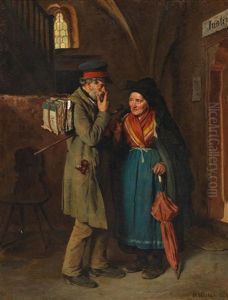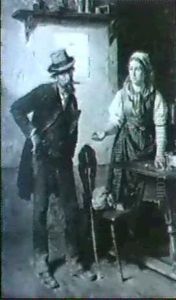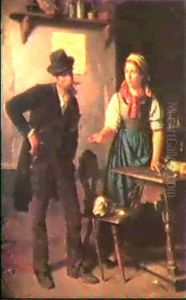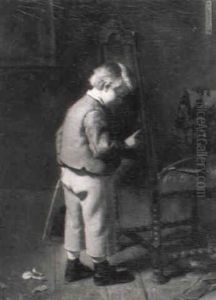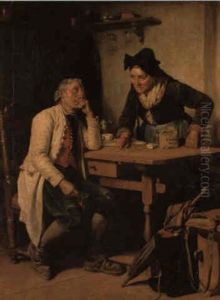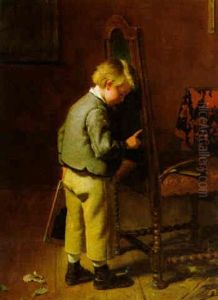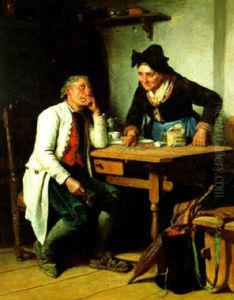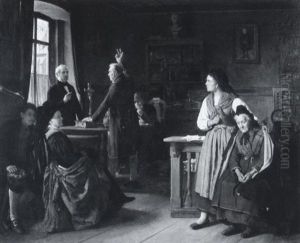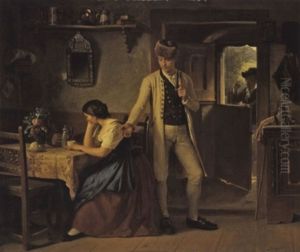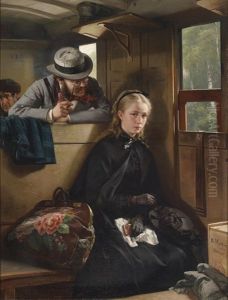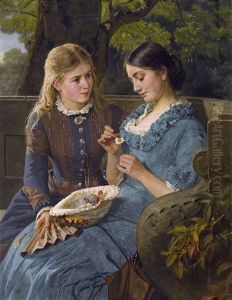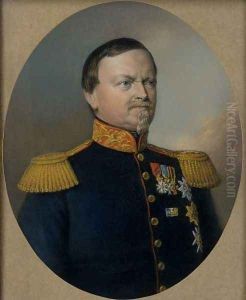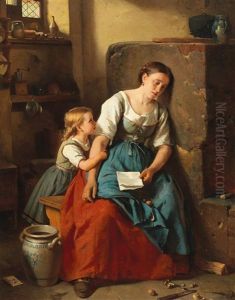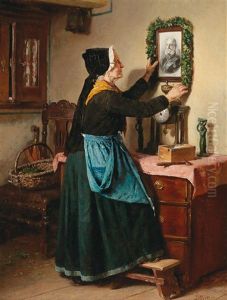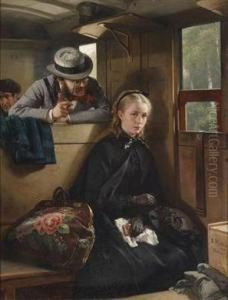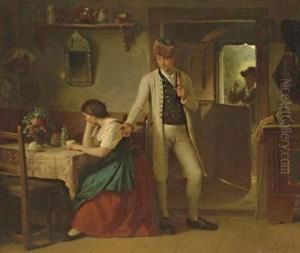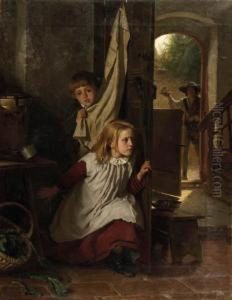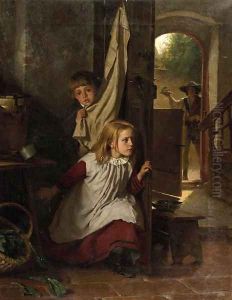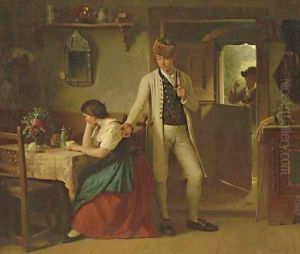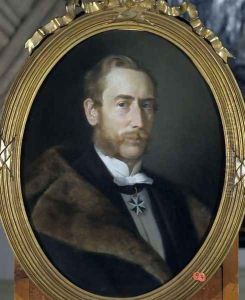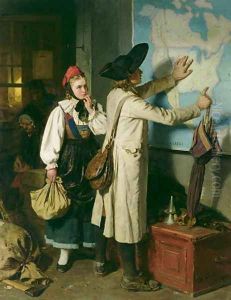Berthold Woltze Paintings
Berthold Woltze was a notable German painter born on October 24, 1829, in Havelberg, Prussia (now part of Germany). He is particularly known for his genre painting, which depicted scenes from everyday life with a focus on storytelling and the human condition.
Woltze's artistic journey began at the Prussian Academy of Arts in Berlin, where he studied under various accomplished artists of the time. His education there provided him with the classical foundations of art, which he would later adapt to his own style. After completing his studies, he spent a significant period of his life working in Weimar, where he became associated with the Weimar School of painting, a group of artists who were inspired by the ideas of German writer Johann Wolfgang von Goethe.
Throughout his career, Woltze developed a style that was characterized by its detailed realism and sensitivity to light and color. He had a penchant for capturing the nuances of social interactions, especially within bourgeois and rural settings. His works often included a moral or didactic element, reflecting the values and concerns of the 19th-century middle class.
One of Woltze's most famous paintings is 'The Irritating Gentleman' (Der lästige Kavalier), which was completed in 1874. This painting is a prime example of his genre work, showing a young woman being bothered by an unwanted admirer at a train station. The painting is celebrated for its intricate detail, narrative quality, and subtle interplay of gazes, which suggest a story beyond what is immediately visible.
Woltze's contributions to art were recognized in his time, and he received various honors, including an appointment as a professor. His works were exhibited widely, and he participated in many important exhibitions, including those of the Prussian Academy of Arts.
Berthold Woltze's death occurred on November 29, 1896, in Weimar. Although not as widely known today as some of his contemporaries, his paintings remain a testament to the genre painting of the 19th century, offering insights into the social fabric of his time and the artistic movements that influenced his work.
